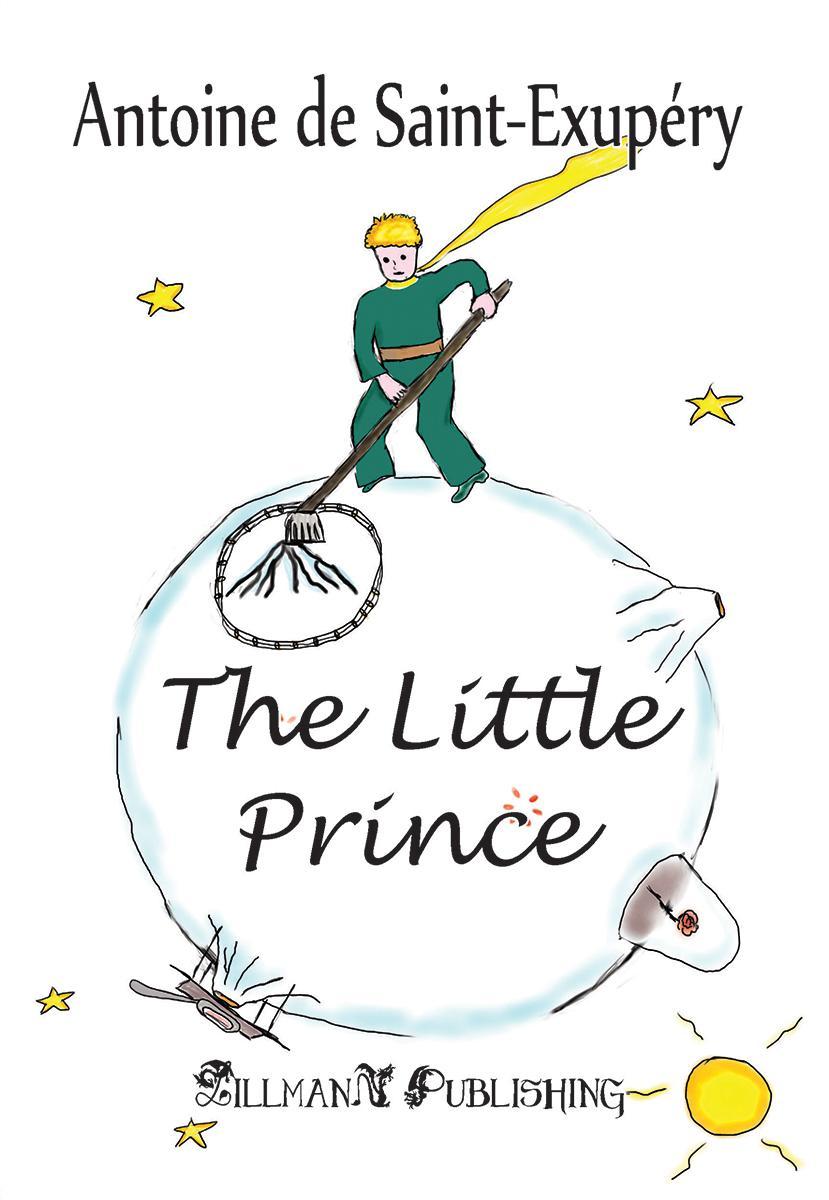
The Republic
¥8.09
Plato's best-known dialogue. According to Wikipedia: "The Republic is a Socratic dialogue written by Plato around 380 BC concerning the definition of justice and the order and character of the just city-state and the just man. The dramatic date of the dialogue has been much debated and though it must take place some time during the Peloponnesian War, "there would be jarring anachronisms if any of the candidate specific dates between 432 and 404 were assigned".[2] It is Plato's best-known work and has proven to be one of the most intellectually and historically influential works of philosophy and political theory. In it, Socrates along with various Athenians and foreigners discuss the meaning of justice and examine whether or not the just man is happier than the unjust man by considering a series of different cities coming into existence "in speech", culminating in a city (Kallipolis) ruled by philosopher-kings; and by examining the nature of existing regimes. The participants also discuss the theory of forms, the immortality of the soul, and the roles of the philosopher and of poetry in society."

The Works of Jonathan Edwards
¥8.09
The complete works. A massive tome. According to Wikipedia: "Jonathan Edwards (October 5, 1703 – March 22, 1758) was a colonial American Congregational preacher, theologian, and missionary to Native Americans. Edwards "is widely acknowledged to be America's most important and original philosophical theologian". His work is very broad in scope, but he is often associated with his defense of Calvinist theology, the metaphysics of theological determinism, and the Puritan heritage. His famous sermon "Sinners in the Hands of an Angry God," emphasized the just wrath of God against sin and contrasted it with the provision of God for salvation; the intensity of his preaching sometimes resulted in members of the audience fainting, swooning, and other more obtrusive reactions. The swooning and other behaviors in his audience caught him up in a controversy over "bodily effects" of the Holy Spirit's presence."

Delphi Complete Works of Quintus Curtius Rufus - History of Alexander (Illustrat
¥24.44
Quintus Curtius was a rhetorician that lived in the first century of the Roman Empire, who wrote a history of Alexander the Great, one of the five extant works on the legendry Macedonian king. Composed in a concise yet picturesque style, this short historical work tells the fascinating story of a man whose exploits continue to astound after more than two millennia. Delphi’s Ancient Classics series provides eReaders with the wisdom of the Classical world, with both English translations and the original Latin texts. This comprehensive eBook presents Curtius’ complete extant text, with relevant illustrations, informative introductions and the usual Delphi bonus material. (Version 1) * Beautifully illustrated with images relating to Curtius’ work* Features the complete extant text of Curtius, in both English translation and the original Latin* Includes J. C. Rolfe’s translation, previously appearing in the Loeb Classical Library edition* Excellent formatting of the texts* Easily locate the books you want to read with individual contents tables* Provides a special dual English and Latin text, allowing readers to compare the sections paragraph by paragraph – ideal for students* Features a bonus biography – discover Curtius’ ancient world and text* Scholarly ordering of texts into chronological order and literary genres Please visit www.delphiclassics.com to explore our range of Ancient Classics titles or buy the entire series as a Super Set CONTENTS: The TranslationHISTORY OF ALEXANDER The Latin TextCONTENTS OF THE LATIN TEXT The Dual TextDUAL LATIN AND ENGLISH TEXT The BiographyINTRODUCTION TO QUINTUS CURTIUS RUFUS by J. C. Rolfe Please visit www.delphiclassics.com to browse through our range of exciting titles

Dialogues Concerning Natural Religion
¥8.09
Dialogues Concerning Natural Religion is a philosophical work by the Scottish philosopher David Hume. Through dialogue, three philosophers named Demea, Philo, and Cleanthes debate the nature of God's existence. Whether or not these names reference specific philosophers, ancient or otherwise, remains a topic of scholarly dispute. While all three agree that a god exists, they differ sharply in opinion on God's nature or attributes and how, or if, humankind can come to knowledge of a deity. ? In the Dialogues, Hume's characters debate a number of arguments for the existence of God, and arguments whose proponents believe through which we may come to know the nature of God. Such topics debated include the argument from design—for which Hume uses a house—and whether there is more suffering or good in the world (argument from evil). ? Hume started writing the Dialogues in 1750 but did not complete them until 1776, shortly before his death. They are based partly on Cicero's De Natura Deorum. The Dialogues were published posthumously in 1779, originally with neither the author's nor the publisher's name.

No and Yes
¥8.09
According to Wikipedia: "Mary Baker Eddy (born Mary Morse Baker July 16, 1821 – December 3, 1910) was the founder of the Christian Science movement. Deeply religious, she advocated Christian Science as a spiritual practical solution to health and moral issues. She wrote Science and Health with Key to the Scriptures, founded The First Church of Christ, Scientist of Boston in 1879, and several periodicals including The Christian Science Monitor. She took the name Mary Baker Glover from her first marriage and was also known as Mary Baker Glover Eddy or Mary Baker G. Eddy from her third marriage. She did much spiritual teaching, lecturing, and instantaneous healing. Her influence continues to grow through her writings."

Matthew Henry's Concise Commentary on the Bible
¥8.09
According to Wikipedia: "Matthew Henry (18 October 1662 – 22 June 1714), was an English non-conformist clergyman. He was born at Broad Oak, a farmhouse on the borders of Flintshire and Shropshire. His father, Philip Henry, had just been ejected by the Act of Uniformity 1662. Unlike most of his fellow-sufferers, Philip possessed some private means, and was thus able to give his son a good education. Matthew went first to a school at Islington, and then to Gray's Inn. He soon gave up his legal studies for theology, and in 1687 became minister of a Presbyterian congregation at Chester. He moved again in 1712 to Mare Street, Hackney. Two years later (22 June 1714), he died suddenly of apoplexy at the Queen's Aid House (41 High Street) in Nantwich while on a journey from Chester to London. Henry's well-known Exposition of the Old and New Testaments (1708–1710) is a commentary of a practical and devotional rather than of a critical kind, covering the whole of the Old Testament, and the Gospels and Acts in the New Testament. After the author's death, the work was finished by a number of ministers, and edited by G. Burder and John Hughes in 1811. Not a work of textual criticism, its attempt at good sense, discrimination, its high moral tone and simple piety with practical application, combined with the well-sustained flow of its English style, made it one of the most popular works of its type. Matthew Henry's six volume Complete Commentary, originally published in 1706, provides an exhaustive verse by verse study of the Bible. His commentaries are still in use to this day. Henry's commentaries are primarily exegetical, dealing with the scripture text as presented. Henry's prime intention was explanation, not translation or textual research."

The Social Contract
¥8.09
According to Wikipedia: "Of The Social Contract, Or Principles of Political Right (Du contrat social ou Principes du droit politique; 1762) by Jean-Jacques Rousseau is a book in which Rousseau theorized about the best way to establish a political community in the face of the problems of commercial society, which he had already identified in his Discourse on Inequality (1754). The Social Contract helped inspire political reforms or revolutions in Europe, especially in France. The Social Contract argued against the idea that monarchs were divinely empowered to legislate; as Rousseau asserts, only the people, who are sovereign, have that all-powerful right... Jean-Jacques Rousseau (28 June 1712 – 2 July 1778) was a Genevan philosopher, writer, and composer of the 18th century. His political philosophy influenced the French Revolution as well as the overall development of modern political, sociological, and educational thought. Rousseau's novel Emile, or On Education is a treatise on the education of the whole person for citizenship. His sentimental novel Julie, or the New Heloise was of importance to the development of pre-romanticism and romanticism in fiction. Rousseau's autobiographical writings — his Confessions, which initiated the modern autobiography, and his Reveries of a Solitary Walker — exemplified the late 18th-century movement known as the Age of Sensibility, and featured an increased focus on subjectivity and introspection that later characterized modern writing. His Discourse on Inequality and The Social Contract are cornerstones in modern political and social thought."

Physics
¥40.79
Physics is a collection of lessons that deal with the general principles of natural or moving things, both living and non-living, rather than physical theories or investigations of the particular contents of the universe. The chief purpose of the work is to discover the principles and causes of change, or movement.

Hayat?n Anlam?
¥2.44
Bir guumln ccedilok zengin bir adam o?lunu yan?na alarak, insanlar?n ne kadar fakir olabilece?ini gouml;stermek iccedilin onu bir koumlye gouml tuumlrduuml. Ccedilok fakir bir ailenin evinde bir guumln bir gece geccedilirdiler. ehre douml nerken baba o?luna sordu: "Yolculu?umuzu nas?l buldun?" "Ccedilok guuml zeldi babac???m" diye cevap verdi o?lu. "?nsanlar?n ne kadar fakir olabilece?ini gouml rduumln de?il mi?" "Evet." "Peki ne ouml ?rendin?" "unu goumlrd uumlm" dedi o?lu: "Bizim evde bir kouml pe?imiz, onlar?n doumlrt kouml pe?i var.

Сказки про детей:Иллюстрированное издание
¥15.18
Представляем новый сборник коротких поучительных историй от Алексея Лукшина, автора, уже известного вам по ?Сказкам Дружного леса?. На этот раз действие разворачивается не в волшебном лесу, но на знакомых нам улицах родных городов, а главные герои книги — дети, которые попадают в иногда забавные, а иногда и сложные ситуации, делая из них правильные выводы и усваивая важные жизненные уроки. Издательство Animedia Company желает вам приятного чтения.

Чтобы вы гордились детьми
¥60.96
Для того чтобы сесть за руль, необходимо сперва научиться водить машину, сдать экзамены по теории правил дорожного движения и практике навыков вождения и затем получить на вождение письменное разрешение в виде водительских прав. Однако для воспитания ребёнка и подготовки зрелого полноценного члена общества совершенно нет никаких требований. Мне всегда это казалось странным. Разве неправильное формирование личности в детстве и юности не приводит к проблемам во взрослом возрасте? Разве каждый родитель не нуждается в проверке правильности своего интуитивного умения ?выруливать? своего ребёнка на путь истинный? По-моему, пришло время серьёзно заняться этим вопросом и среди бесконечной массы неправильных методов воспитания, изобретаемых каждым молодым и неопытным родителем, отыскать элементы прекрасных и бесспорно зарекомендовавших себя методик и выстроить основательную систему и грамотный подход к такому важному делу, как родительский труд по воспитанию своих детей. Издательство Animedia Company желает вам приятного чтения.

Os 60 Minutos No Paraíso
¥90.60
A HIST?RIA REAL E EXTRAORDIN?RIA DE QUEM ESTEVE NO PARA?SO E SAIBA O QUE ACONTECEU DE VERDADE!!!_______________________________ Um acidente de trabalho que vitimou o jovem que resultou na morte, e hoje tornou-se pastor. Hoje ele é uma testemunha viva que o livro conta em detalhes tudo que aconteceu de verdade em sua jornada para o céu e seus planos para aqui na terra. Você já sentiu isso? Aquele frio na barriga e o cora??o batendo forte? O medo, a emo??o o sangue correndo pelo nosso corpo em disparada, sem controle, só acontece é que tudo isso para de funcionar, às vezes volte, às vezes n?o! Eu, estava com essa mesma sensa??o quando tudo isso aconteceu comigo! Uma sensa??o de descanso, de repouso, de bem-estar, de saúde, a energia empreendida que n?o tem fimE MAIS NESTE LIVRO VOC? VAI ENCONTRAR AJUDA PARA TODA FAM?LIA, SOBRE DROGAS, MEDO, PROSPERIDADE, DESAFIOS, DOEN?AS, FUTURO, FINAN?AS…

Boissons naturelles pour votre santé
¥0.01
Un petit jus frais ou une tisane pour la santé? Vous aimez la nature, les animaux ou les végétaux? Vous aimeriez savoir comment utiliser fruits et légumes pour faire des jus frais, des tisanes, et améliorer votre santé? La vie est aussi faite de plaisirs simples qui peuvent se transformer en pur bonheur facilement Notre collection de livrets?pratiques ??eGuide Nature?? va vous le prouver! Découvrez des petits livres faciles et pas chers qui vont vous?aider à faire entrer la Nature dans votre quotidien! Nous avons plus d’une décennie d’expérience?dans l’élevage de petits animaux et leur présentation aux enfants dans le cadre d’un mini-zoo et aimons transmettre l’expérience de nos a?nés. Nous adorons aussi cuisiner naturellement et préparer toute sorte de jus ou de tisanes Nous souhaitons partager avec vous nos connaissances utiles et nos astuces pour???apprivoiser?? simplement cette Nature dont?quelques fois la vie moderne nous éloigne… Vous allez découvrir des petits livres pratiques utiles, toujours à portée de main dans votre smartphone N°0 – Boissons naturelles pour votre santé Dans ce numéro ??zéro?? de la collection ??eGuide Nature?? nous allons voir comment préparer des boissons naturelles, des jus frais ou des tisanes pour rester simplement et naturellement?en?bonne santé! Qu’allez vous trouver dans cet ??eGuide Nature??? nos conseils pour bien?préparer vos jus de fruits nos astuces pour concocter des tisanes 20?recettes?santé Alors, êtes vous prêt(e) à faire entrer la Nature dans votre quotidien?! Oui?On y va! Amicalement, Cristina Olivier Rebiere

The Faerie War
¥32.62
Driven by action, suspense, and a strong heroine, this bestselling YA fantasy will keep you turning the pages ... Violet Fairdale is in big trouble. Her home is gone, her beloved forest lies in ruins, the guy she gave her heart to has deserted her—and she doesn’t remember any of it. The powerful Lord Draven is taking over, brainwashing guardians into fighting for him. No one is safe from the evil spreading throughout the fae world. As alliances are forged between the remaining free fae, Vi struggles to reclaim her identity and figure out where she belongs in this new world. When someone from her past shows up, life gets more complicated. He brings with him a long-forgotten weapon and an ancient prophecy that places Vi at the center of the fight against Draven. With the future of the fae world at stake, can Vi carry out the prophecy’s instructions before it’s too late? Perfect for fans of The Mortal Instruments,The Iron Fey, and Graceling.

The Little Prince
¥12.26
Goodbye, said the fox. And now here is my secret, a very simple secret. It is only with the heart that one can see rightly. What is essential is invisible to the eye.Antoine de Saint-Exupeacutery, The Little Prince The Little Prince first published in 1943, is a novella and the most famous work of the French aristocrat, writer, poet and pioneering aviator Antoine de Saint-Exupeacutery.The novella is both the most read and most translated book in the French language, and was voted the best book of the 20th century in France. Translated into more than 250 languages and dialects selling over a million copies per year with sales totalling more than 140 million copies worldwide, it has become one of the best-selling books ever published.Saint-Exupeacutery, a laureate of several of France's highest literary awards and a reserve military pilot at the start of the Second World War, wrote and illustrated the manuscript while exiled in the United States after the Fall of France. He had travelled there on a personal mission to persuade its government to quickly enter the war against Nazi Germany. In the midst of personal upheavals and failing health he produced almost half of the writings he would be remembered for, including a tender tale of loneliness, friendship, love and loss, in the form of a young prince fallen to Earth.

The Call of Cthulhu
¥8.09
"The Call of Cthulhu" is one of H. P. Lovecraft's best-known short stories. Written in the summer of 1926, it was first published in Weird Tales, February 1928. It is the only story written by Lovecraft in which the extraterrestrial entity Cthulhu himself makes a major appearance. It is written in a documentary style, with three independent narratives linked together by the device of a narrator discovering notes left by a deceased relative. The narrator pieces together the whole truth and disturbing significance of the information he possesses, illustrating the story's first line: "The most merciful thing in the world, I think, is the inability of the human mind to correlate all its contents. We live on a placid island of ignorance in the midst of black seas of infinity; and it was not meant that we should voyage far."

School Jokes
¥2.78
School Jokes One hundred of hilarious and funny jokes !Have fun and laugh!

Dragoste sub presiune
¥7.36
Crawford Hunt ??i vrea fiica ?napoi. Dup? moartea so?iei sale ?n urm? cu patru ani, rangerul texan a alunecat pe o pant? a nes?buin?elor care a f?cut s? fie consemnat la munca de birou ?i a dus la pierderea custodiei fiicei sale. Acum ?ns? Crawford ?i-a reg?sit calea cea dreapt?, a?a c? ?nainteaz? o cerere de redob?ndire a custodiei. Cazul i este atribuit judec?toarei Holly Spencer, o femeie la fel de atr?g?toare pe c?t este de ambi?ioas?. C?nd un mascat ?narmat ?ntrerupe audierile pentru custodie ?i ?ndreapt? arma c?tre judec?toare, rangerul reac?ioneaz? instinctiv ?i se n?puste?te asupra lui. Dar autorit??ile prind pe altcineva, iar adev?ratul atacator r?m?ne necunoscut, ?n libertate, un pericol. Prinderea adev?ratului f?pta? devine pentru Crawford o misiune personal?. Oare omul legii, obi?nuit s? ia atitudine, ??i va risca ?ansele de a ob?ine custodia copilului ?i va porni pe urmele unui presupus asasin? ?i oare va reu?it aceast? pereche mai pu?in obi?nuit? s? ignore atrac?ia interzis? ce pare s? fie din ce ?n ce mai puternic??

A Faerie's Curse
¥40.79
A witch’s curse. A world-ending prophecy. A daring rescue mission. Don’t miss the heart-pounding finale to Calla’s story! On the run from the Guild of Guardians, Calla Larkenwood and her team of fellow outlaws plan a daring rescue operation into the Seelie Court itself. As if that isn’t enough to keep them busy, the power-hungry Princess Angelica has begun preparations for a horrifying prophesied spell that will forever change both the magic and non-magic realms. When Calla is blindsided by an unspeakable tragedy before the rescue can be carried out, she struggles to remain focused on her mission. She believes she’s reached her lowest point—until a witch reveals the final blow: she has cursed Calla’s magic. With time running out, can Calla save the one she loves and stop the prophecy from being carried out before the curse claims her life? Perfect for fans of The Mortal Instruments,The Iron Fey, and Graceling.

Delphi Complete Works of Aulus Gellius - 'The Attic Nights' (Illustrated)
¥16.27
Composed during the nights of an Attic winter, the sole surviving work of Aulus Gellius, the second century Latin author and grammarian, is an intriguing compendium of notes covering philosophy, history, biography and questions of grammar. ‘Attic Nights’ offers a valuable insight into the works of lost authors and the manners and occupations of Roman society. Delphi’s Ancient Classics series provides eReaders with the wisdom of the Classical world, with both English translations and the original Latin texts. This comprehensive eBook presents Aulus Gellius’ complete extant works, with relevant illustrations, informative introductions and the usual Delphi bonus material. (Version 1) * Beautifully illustrated with images relating to Aulus Gellius’ life and works* Features the complete extant works of Aulus Gellius, in both English translation and the original Latin* Concise introductions to the ‘Attic Nights’* Includes John C. Rolfe’s translation previously appearing in the Loeb Classical Library edition of Aulus* Excellent formatting of the texts* Easily locate the sections you want to read with individual contents tables* Provides a special dual English and Latin text, allowing readers to compare the sections paragraph by paragraph – ideal for students* Features a bonus biography – discover Aulus Gellius’ ancient world* Scholarly ordering of texts into chronological order and literary genres Please visit www.delphiclassics.com to explore our range of Ancient Classics titles or buy the entire series as a Super Set CONTENTS: The TranslationTHE ATTIC NIGHTS The Latin TextCONTENTS OF THE LATIN TEXT The Dual TextDUAL LATIN AND ENGLISH TEXT The BiographyLIFE OF AULUS GELLIUS by G. H. Nall Please visit www.delphiclassics.com to browse through our range of exciting titles

Delphi Complete Works of Cornelius Nepos (Illustrated)
¥16.27
The friend of Cicero, Atticus and Catullus, Cornelius Nepos wrote short popular biographies of Greek and Roman commanders. The lives are composed in a concise, readable style and they are invaluable for their use of reliable sources. Delphi’s Ancient Classics series provides eReaders with the wisdom of the Classical world, with both English translations and the original Latin texts. This comprehensive eBook presents Nepos’ complete extant works, with relevant illustrations, informative introductions and the usual Delphi bonus material. (Version 1) * Beautifully illustrated with images relating to Nepos’ life and works* Features the complete extant works of Nepos, in both English translation and the original Latin* Concise introduction to the extant works* Features John Selby Watson’s translation of LIVES OF EMINENT COMMANDERS* Excellent formatting of the texts* Easily locate the sections you want to read with individual contents tables* Includes Watson’s original footnotes* Provides a special dual English and Latin text, allowing readers to compare the sections paragraph by paragraph – ideal for students* Features a bonus biography – discover Nepos’ ancient world* Scholarly ordering of texts into chronological order and literary genres Please visit www.delphiclassics.com to explore our range of Ancient Classics titles or buy the entire series as a Super Set CONTENTS: The TranslationLIVES OF EMINENT COMMANDERS The Latin TextCONTENTS OF THE LATIN TEXT The Dual TextDUAL LATIN AND ENGLISH TEXT The BiographyBRIEF BIOGRAPHY: CORNELIUS NEPOS Please visit www.delphiclassics.com to browse through our range of exciting titles




 购物车
购物车 个人中心
个人中心



